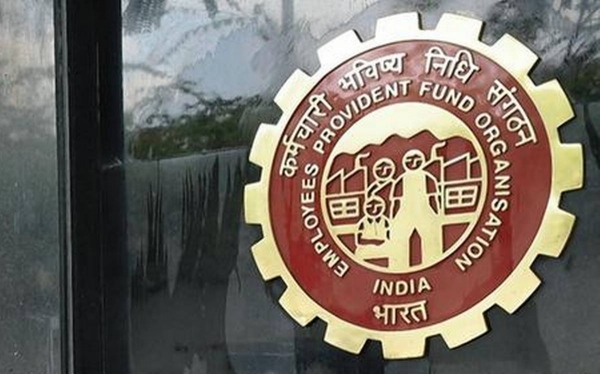Table of Content
All About EPFO: EPF schemes, tax benefits, withdrawal process:
The Employees' Provident Fund Organisation is one of the largest social security organizations, is a retirement fund body which on a mandatory basis provides universal social security coverage to all salaried employees in India.

Click here for Employers Portal, EPFO unified portal
EPF Scheme and tax benefits:
The Employees' Provident Fund Organisation Operates three schemes:
EPF scheme 1952
Pension Scheme 1995
Insurance Scheme 1976
Under these employees and employers both make an equal contribution to the scheme. Both of them almost contribute around 12% of the employee's basic salary. The employee gets the lump sum amount on retirement with interest.
As already said that EPFO is the world's largest security organization in terms of the volume in the financial transactions. According to the report of 2015-16, EPFO is maintaining almost 17.14 crores accounts. It provides universal social security coverage on a mandatory basis by way of PF, pension, and also the life insurance for the employees across the country.
EPF Eligibility?
All salaried employees are eligible for the Employees Provident Fund (EPF). Those employees who have salaries less than 15,000 per month it is mandatory for them to register for the EPF account. As per the Laws the company that has more than 20 employees has to get registered with the EPFO. Registration for the EPF scheme can be done on the official website.
EPF Contribution by the employee and employers:
Under the EPF scheme, both the employee and the employer make an equal contribution towards the scheme for the beneficiary. After retirement the employee gets almost the lump sum amount with the interest. From the 12% contribution during the job days, almost 8.33% was divided into the employee's EPS account. The balance of 3.67 % from the employer's side goes to the employee's EPF account.
What are the Interest Rates on EPFO?
According to the official EPF India Website, the current annual interest on EPF is 8.55% in the year 2017-18, whereas in 2016-17 it was around 8.65%. The EPFO’s Central Board of Trustees after consultation with the Ministry of Finance reviews the interest rate of EPF every year, for a financial year. EPF interest rate was hiked to 8.65 percent ahead of Elections 2019. However, it is yet to be approved by the CBT, after which the proposal requires the concurrence of the finance ministry.
How interest on EPF is calculated?
The government and the central board of trustees determine the compound interest. The interest on the contributions is calculated on yearly basis, even though the contributions are made monthly. At the beginning of every year, the employees have an opening balance (the amount accumulated till that point).
What are EPF Claim Forms?
The Aadhaar-based new composite claim form or the non-Aadhaar composite claim form is needed for submission of the physical application directly to withdraw the PF money from the offices. The employee needs to fill the new composite claim form and submit the PF withdrawal application directly to the regional PF office without the attestation of an employer. The employer's relative can also go in case the employer is not able to, but the employer if could go along will be the best as things will speed up without any such hindrance. In case of the non-Aadhaar composite claim form, employees need to fill it up and get it attested either by any bank manager, a Gazetted Officer or a Magistrate and submit it in the respective jurisdictional EPFO office.
How to access EPF on the Umang App?
Unified Mobile Application for New-age Governance (Umang) app is a one-stop solution for many government services, including the Employees Provident Fund (EPF). As this time is the digital world we live in, it makes it easy to use and handle the accounts without physically going to the offices even for the small queries.
One needs to download the Umang app from the Play Store or Apple store and login using one’s mobile number. To access EPF on the Umang App, select EPFO services, and then click on the employee-centric services. One needs to enter one’s UAN (Universal Account Number) and click on ‘Get OTP’. After entering the OTP, one can view passbook, raise a claim, and track a claim by selecting the member ID of the company whose EPF account one wants to access. This is quite personal information to try and avoid to do any such mistakes and give correct information while filling up the details.
What if I don’t want to pay PF?
When in a company the number of employees, who draw wages (basic + dearness allowance) up to Rs 15,000 per month, reaches 20 or more, the deduction of PF becomes mandatory and unavoidable. It is applied by the Government to provide a decent amount to the employers even after they are retired. It is for the goodwill of the employee itself. It is not a matter of choice of anyone to participate; it is statutory compliance and is obligatory if the above conditions are met.
What are the tax benefits on EPFO?
The EPF money is sovereign-backed and the interest earned is tax-free. EPF enjoys the EEE (exempt-exempt-exempt) status. The employee’s contribution is tax-deductible under Section 80C of the Income Tax Act. Hence, the money invested, the interest earned, and the money the employee eventually withdraws after the mandatory specified period (5 years) are exempt from Income Tax. So it is a positive point one can consider if they wanted to save the tax, also it is a benefit for the employee during their work years as well as when they retired.
.webp)





_1735214375.webp)









